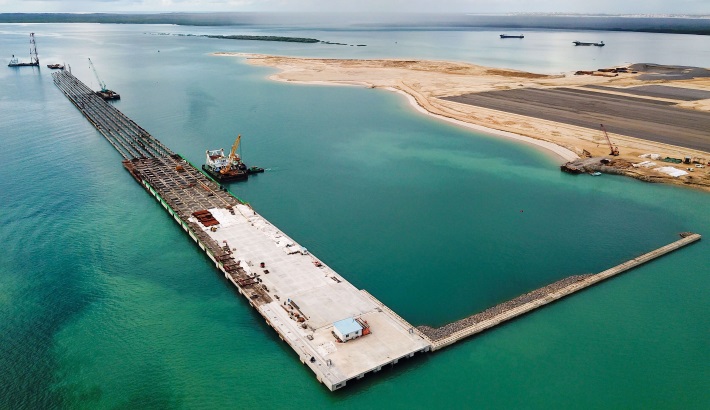Infrastructure
Launch of Lamu Port’s First Three Berths Set for December
The dockside project has been set up at a cost of Sh48 billion.

Construction of the first three berths of Lamu Port is underway despite the Covid-19 pandemic, with the handover and opening of the Sh48 billion project slated for December.
The Lamu Port-South Sudan-Ethiopia Transport (Lapsset) Development Authority, which announced the completion of the first berth on August 6, 2019, expects the contractor to finalise work by the end of the year to pave the way for the construction of 29 berths.
“The government is on schedule for the delivery of the remaining two berths by December 2020,” Lapsset director general and CEO Silvester Kasuku said in an interview.
Mr Kasuku said the completion of the first three berths presents a case for private investors to participate in the construction of additional berths and the Special Economic Zone.
According to the Authority, the contractor – China Communication Construction Company (CCCC) – is currently working on the container yard for berths 2 and 3, with dredging works underway to complete the two as well as a section of the 1.2-kilometre causeway.
The Lamu Port berths construction has been ongoing, with about 800 workers on site, despite the coronavirus pandemic that has stopped most government projects.
The Treasury has allocated Sh6 billion for the project in the 2020/2021 financial year.
The Lamu Port berths project got underway in October 2016 in Manda Bay, Lamu County, as the Kenyan government sought to create a regional transport hub.
The first berth was expected to be ready in March 2018, with the second and third berths slated for completion in 2019 and 2020 respectively.
This, however, did not happen due to financial challenges that forced the government to revise the first berth’s completion deadline four times.
RELATED: Kenya Seeks Sh720bn for Naivasha-Malaba SGR Project
The project is financed by the government under a “pay as you go” financing model that was once dismissed by critics who believed it was inefficient for a project of such magnitude.
The PayGo model is simple: A government finances its mega projects not with borrowed money or new revenues, but by saving or freeing up money from existing sources.
The financing model seems quite reasonable but it has numerous challenges – both monetary and political – that it becomes a poor fit for large infrastructure projects.
Nonetheless, the commissioning of the berths will be a major boost for the Lapsset corridor project – coming shortly after the Sh2 trillion project was adopted as an African Union project early in the year.
In addition to the port, the Lapsset project features several other components including a superhighway connecting Lamu to Addis Ababa, Ethiopia, and Juba in Southern Sudan.
The highway will be built in two phases: starting with the Lamu-Isiolo-Addis Ababa-Djibouti route before embarking on connecting Lamu to Kribi/Douala via Juba and Bangui.
It will link the port of Lamu to Douala Port in Cameroon, on the Atlantic Ocean.
Once operationalised, Lamu Port – the biggest deep-sea port in East Africa – will serve Ethiopia, which relies on the port of Djibouti. It will also cater to South Sudan, which depends on Port Sudan.














